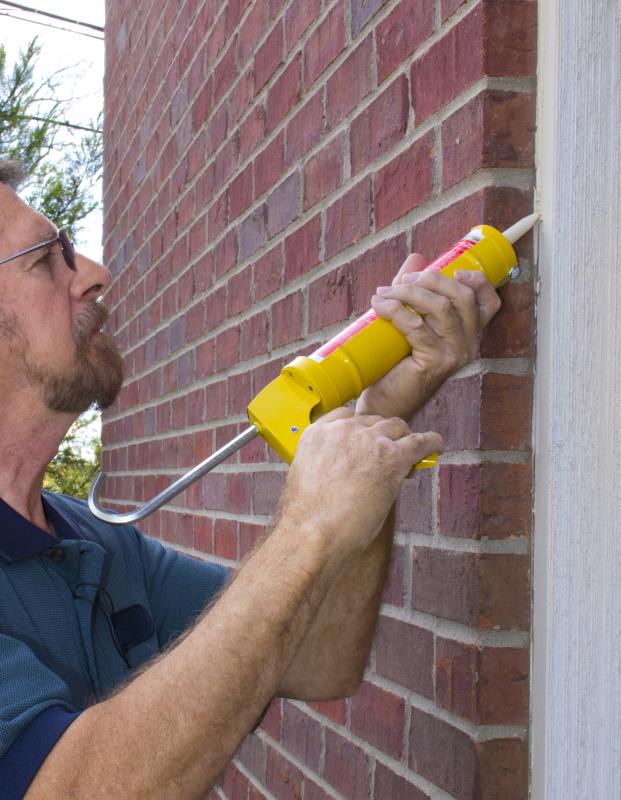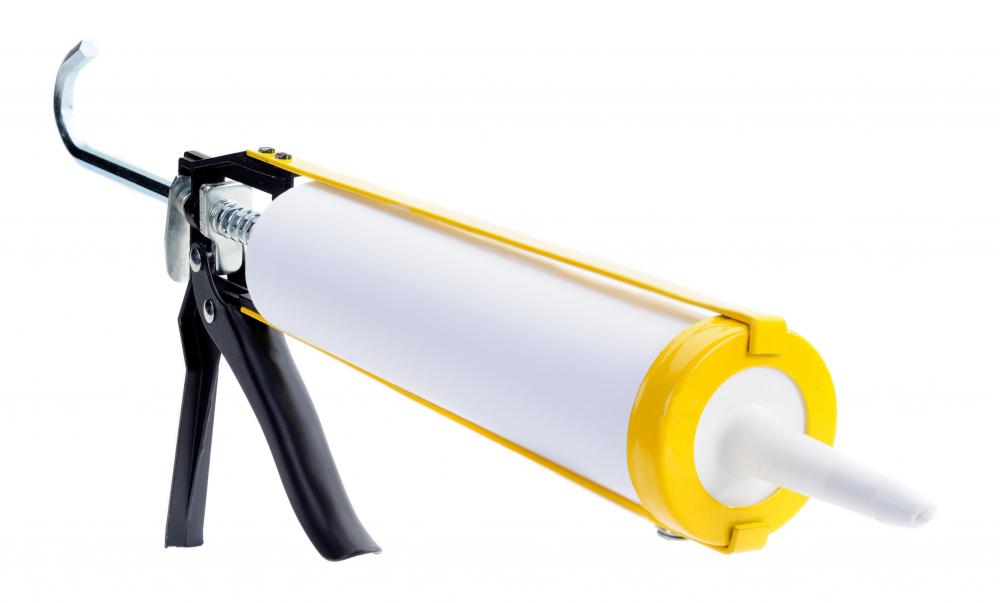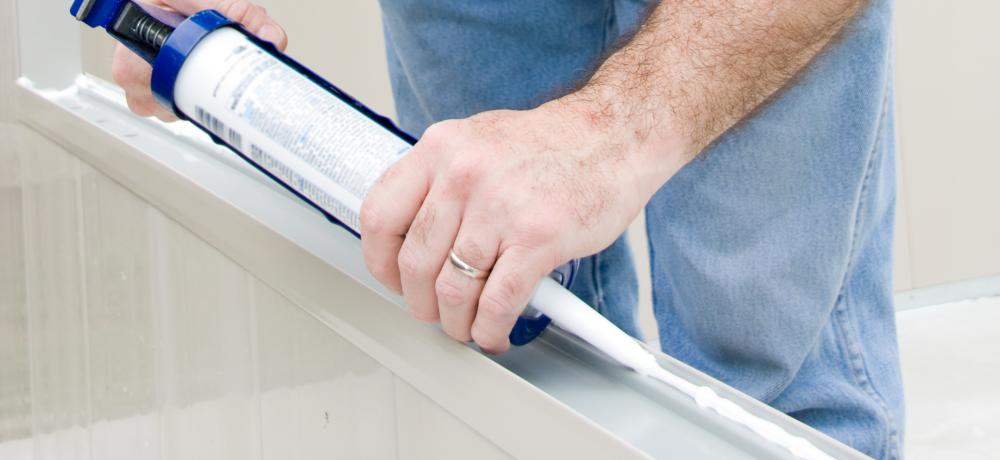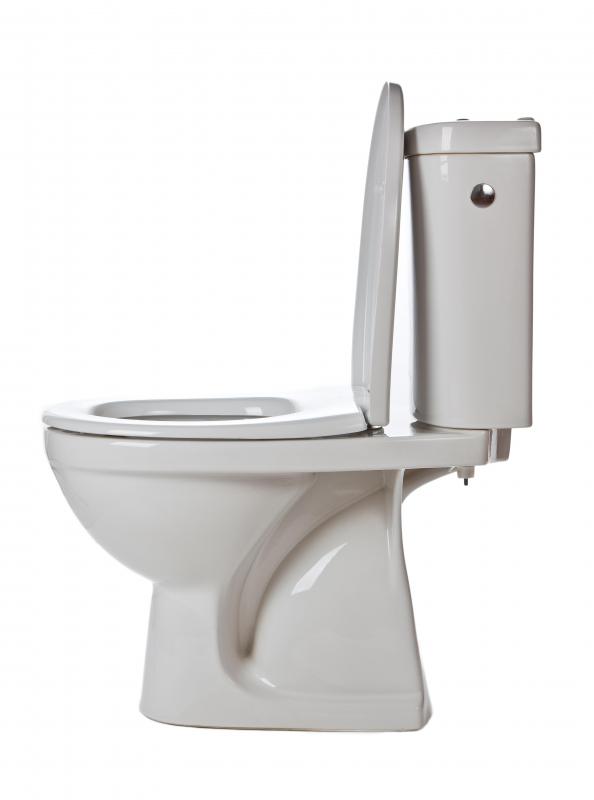At HomeQuestionsAnswered, we're committed to delivering accurate, trustworthy information. Our expert-authored content is rigorously fact-checked and sourced from credible authorities. Discover how we uphold the highest standards in providing you with reliable knowledge.
What is Silicone Caulk?
Silicone caulk is a building material with a sticky, gel-like consistency. It is used as a sealant or water-proofing agent around structures and fixtures on both the interior and exterior of a building. This caulk is typically clear in color, but may also be white or colored to match the surrounding decor. It bonds well with almost any material, including glass, ceramic, wood, metal, and plastics.
One of the primary applications for silicone caulk is sealing around plumbing fixtures such as bathtubs, showers, toilets, and sinks. The caulk keeps water from seeping into the area beneath there fixtures, which helps minimize moisture damage like rotting or mold accumulation, and it is also used to seal around floors or countertops, particularly in the kitchen or bathroom. It can also be used to weatherproof a house — by sealing around doors, windows and other exterior wall penetrations, homeowners can minimize drafts and energy leaks, and can even keep pests and rodents out of the home.

There are two basic varieties, including both standard and “tub and tile” versions. Standard silicone caulk is generally considered safe to use on countertops or other food-preparation areas. Tub and tile or bathroom caulk contains chemicals designed to prevent mold and mildew growth, but should not be used around food.
Silicone caulk is primarily chosen for its flexibility, which helps to seal or waterproof an area while still allowing for natural expansion and contraction over time. Other types of caulk don't typically offer this level of flexibility, which may result in cracks or other damage as the surrounding objects expand or contract. When used to seal exterior openings, it can make heating and cooling more efficient by stopping air leaks, which may result in lower energy bills. It can also extend the life of different fixtures or structures by lowering the risk of rot or mildew.

One of the biggest disadvantages of silicone caulk is that it cannot be painted. The silicone prevents paint from bonding well with the caulk, which limits a homeowners ability to modify its appearance after it has been installed. It also has a fairly long drying time, and often produces irritating or potentially harmful fumes as it is installed. Because of these fumes, installers should ensure the room is well-ventilated when using silicone-based products. The caulk should also be protected from moisture for several days after application so that it can dry completely.
AS FEATURED ON:
AS FEATURED ON:















Discussion Comments
My dad used silicone caulk around our window and this next morning it still smells! I agree it is more than just vinegar smell, but something more toxic and not natural. I've cracked the windows and hope that it will soon stop.
@shell4life – To me, the smell is unbearable. I don't know how people who have to work with caulk on a daily basis tolerate the fumes!
After my dad used silicone caulk on just one small corner of the room, I had to leave for the rest of the day. The odor is a lot like vinegar, but there is a more chemically intense smell to it. Imagine mixing nail polish remover with vinegar and breathing in the fumes.
He didn't think it was that bad, but I couldn't be in the room until it had been aired out for six hours. He had left the windows open so the smell could dissipate.
My husband and I moved into a forty-year-old house right after getting married, and it needed a good bit of work. It had all kinds of gaps and cracks around the edges, and this would have really increased our heating and air conditioning bill.
My husband used silicone sealant caulk around the edges of every window. Before he did this, you could stand in front of one and feel the frigid air coming in from outside. Afterward, I could tell a big difference.
I was away on a business trip while he did the caulking, so I don't know how it smelled. I've heard that it can be pretty intense, though. That makes me glad I missed out on it!
Silicone caulking is kind of gooey. Its texture reminds me of a worm!
My dad caulked the edges of our window frames, and a few days after he had done this, I touched the caulk out of curiosity. It looked like it would feel rubbery, and sure enough, it did.
I never knew before reading this article that this flexibility is a protective measure against cracking. I always wondered why something that was meant to be a sealant would be so soft. Now I understand.
Post your comments